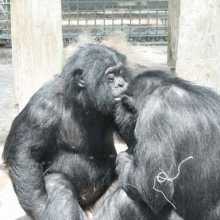Domestication Syndrome: How Animals Become Domesticated Without People
Hare recalls a a lecture from Harvard anthropologist Richard Wranghem on the evolutionary puzzle of the Bonobo, which share a number of traits with Chimpanzees but no one can seem to explain why.” Hare made the connection to a breed of “silver foxes”, bred by Russian geneticist Demitri Belyaev. Belyaev took the least aggressive foxes and interbred them, looking for naturally occurring domestic traits; docility, trainability, temperament and response to stress and social cues. The result was a white splotchy fox that behaviorally was no different than today’s domestic dogs, with some added physical changes as well; shorter canines, white splotches on the fur, floppier ears, and a curlier tail. He managed this within 20 generations of his “silver foxes”, an evolutionary nanosecond.
